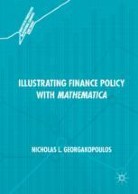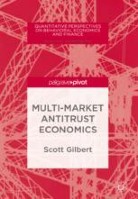
About this book series
The economic enterprise has firmly established itself as one of evaluating human responses to scarcity not as a rigidly rational game of optimization, but as a holistic behavioral phenomenon. The full spectrum of social sciences that inform economics, ranging from game theory to evolutionary psychology, has revealed the extent to which economic decisions and their consequences hinge on psychological, social, cognitive, and emotional factors beyond the reach of classical and neoclassical approaches to economics. Bounded rational decisions generate prices, returns, and resource allocation decisions that no purely rational approach to optimization would predict, let alone prescribe. Behavioral considerations hold the key to longstanding problems in economics and finance. Market imperfections such as bubbles and crashes, herd behavior, and the equity premium puzzle represent merely a few of the phenomena whose principal causes arise from the comprehensible mysteries of human perception and behavior.
Within the heterodox, broad-ranging fields of behavioral economics, a distinct branch of behavioral finance has arisen. Finance has established itself as a distinct branch of economics by applying the full arsenal of mathematical learning on questions of risk management. Mathematical finance has become so specialized that its practitioners often divide themselves into distinct subfields. Whereas the P branch of mathematical finance seeks to model the future by managing portfolios through multivariate statistics, the Q world attempts to extrapolate the present and guide risk-neutral management through the use of partial differential equations to compute the proper price of derivatives. The emerging field of behavioral finance, worthy of designation by the Greek letter psi (ψ), has identified deep psychological limitations on the claims of the more traditional P and Q branches of mathematical finance. From Markowitz’s original exercises in mean-variance optimization to the Black-Scholes pricing model, the foundations of mathematical finance rest on a seductively beautiful Gaussian edifice of symmetrical models and crisp quantitative modeling. When these models fail, the results are often catastrophic. The ψ branch of behavioral finance, along with other “postmodern” critiques of traditional financial wisdom, can guide theorists and practitioners alike toward a more complete understanding of the behavior of capital markets.
It will no longer suffice to extrapolate prices and forecast market trends without validating these techniques according to the full range of economic theories and empirical data. Superior modeling and data-gathering have made it not only possible, but also imperative to harmonize mathematical finance with other branches of economics. Likewise, if behavioral finance wishes to fulfill its promise of transcending mere critique and providing a more comprehensive account of financial markets, behavioralists must engage the full mathematical apparatus known in all other branches of finance. In a world that simultaneously lauds Eugene Fama’s efficiency hypotheses and heeds Robert Shiller’s warnings against irrational exuberance, progress lies in Lars Peter Hansen’s commitment to quantitative rigor. Theory and empiricism, one and indivisible, now and forever.
- Electronic ISSN
- 2662-3994
- Print ISSN
- 2662-3986
Book titles in this series
-

-
Multi-Market Antitrust Economics
- Authors:
-
- Scott Gilbert
- Copyright: 2018
Available Renditions
- Hard cover
- Soft cover
- eBook

-
Econophysics and Capital Asset Pricing
Splitting the Atom of Systematic Risk
- Authors:
-
- James Ming Chen
- Copyright: 2017
Available Renditions
- Hard cover
- Soft cover
- eBook

-
Finance and the Behavioral Prospect
Risk, Exuberance, and Abnormal Markets
- Authors:
-
- James Ming Chen
- Copyright: 2016
Available Renditions
- Hard cover
- Soft cover
- eBook

-
Postmodern Portfolio Theory
Navigating Abnormal Markets and Investor Behavior
- Authors:
-
- James Ming Chen
- Copyright: 2016
Available Renditions
- Hard cover
- eBook

Abstracted and indexed in
-
- Research Papers in Economics (RePEc)
- zbMATH
